 New Adventures in Space Opera by Jonathan Strahan
New Adventures in Space Opera by Jonathan Strahan Format: eARC
Source: supplied by publisher via Edelweiss
Formats available: paperback, ebook
Genres: science fiction, short stories, space opera
Pages: 338
Published by Tachyon Publications on August 13, 2024
Purchasing Info: Author's Website, Publisher's Website, Amazon, Barnes & Noble, Kobo, Bookshop.org, Better World Books
Goodreads
Have you ever wanted a faster-than-light trip to the future? Are you tired of reading science fiction novels that feel like they’re taking literal eons to finish? These fifteen award-winning and bestselling science fiction authors, including Charlie Jane Anders, Alastair Reynolds, Yoon Ha Lee, Becky Chambers, Tobias S. Buckell, Ann Leckie, and Sam J. Miller, and more, are here as your speedy guides to infinity and beyond.
In “Zen and the Art of Starship Maintenance,” a cloud-based contractor finds a human war criminal clinging to the hull of the ship. The clones of “All the Colours You Thought Were Kings,” about to attend their coming-of-age ceremony, are plotting treason. During “A Temporary Embarrassment in Spacetime,” two outlaws go on the run after stealing a device from a space cult.
Here are the new, adventurous―and most efficient―takes on interstellar battles, sentient spaceships, and political intrigue on a galactic scale. Discover where memories live and die, and where memes rise and fall in moments. Remember, the future is sooner than you think, and there’s only so much time for visiting it.
My Review:
These space opera stories aren’t exactly new as they’ve all been published before in a variety of not necessarily widely available sources. But all are from the last decade and every single story represents an author who is at the top of their game. And, for the most part, they are marvelous.
I’m usually hit or miss with short story collections, sometimes they work, occasionally they don’t, and often there are a couple of stories that go ‘clunk’ and not in a good way and/or one or two where I can see why people liked them but I’m just not the right reader for them.
This particular collection only had three stories that weren’t absolutely stellar – all puns intended. Which means that I read through the whole thing and had at least a bit to say about each, leading to an overall Escape Rating of A.
“Zen and the Art of Starship Maintenance” by Tobias S. Buckell
What is the difference between having free will but not having any real choices and being bound by contracts and programming – but having time to work one’s way around both? What does it REALLY mean to be human? And how much time and freedom does one need to find ALL the loopholes – and exploit the hell out of them? Escape Rating A for an absolutely beautiful asskicking of an ending.
“Extracurricular Activities” by Yoon Ha Lee (2018 Hugo nominee in the Novelette category)
Well, this just moved Ninefox Gambit up the virtually towering TBR pile, because I think this story is set in that universe and features one of the same characters, Shuos Jedai. Obviously one does not need to have read the series to get into this story because clearly I haven’t but just as clearly I most definitely did. Translating this to Trek a bit, because that’s what I was doing in my head, this story is what you’d get if Starfleet sent Section 31 to deal with the Tribbles, used Harry Mudd’s ship as cover – along with a much better looking version of Mudd – and it all worked out anyway in spite of all the reasons the entire operation should go terribly, horribly wrong. This is a story that shouldn’t be nearly as light as it turns out to be – but it is and it does and it was a LOT of fun along the way. Shuos Jedai fails up REALLY HARD in this story and it really works. Escape Rating A
“All the Colors You Thought Were Kings” by Arkady Martine
A different empire, different memories thereof. Three teens about to become cogs in the empire, except that they’ve chosen to take it over instead. A plot, a plan, a triangle of either siblinghood or romance or both, and a million to one shot that comes through but probably won’t change things half as much as they hoped. Escape Rating A
“Belladonna Nights” by Alastair Reynolds
What is the quality of mercy, and what does it mean to remember? Neither of which questions feel remotely like they should go together. I was expecting something about political shenanigans and jockeying for position and/or a bit of a star-crossed lovers romance, and what I got instead was something beautiful and sad and surprisingly elegiac. Which is exactly what the story is, an elegy for a people long dead, as seen through the eyes of the one person willing to remember them. Escape Rating A-
“Metal Like Blood in the Dark” by T. Kingfisher (2021 Hugo winner in the Novelette category)
Not all learning organisms are human, and not all learning is on the side of the angels. But when your opponent is definitely working from the dark side of the Force, even a machine has to learn to fight fire with fire. Reminiscent of T.J. Klune’s In the Lives of Puppets in its story of machines being required to learn the worst lessons from humans – because some of them already have. Escape Rating A+
“A Temporary Embarrassment in Spacetime” by Charlie Jane Anders
This was just so deliciously, delightfully and dementedly over the top that it’s rolling on the floor laughing its ass off on the other side. A belly laugh of a tale, with a sensibility and a naming convention reminiscent of The Hitchhiker’s Guide to the Galaxy. Escape Rating A-
“Immersion” by Aliette de Bodard (2013 Hugo nominee in the Short Story category)
The weapons of conquest are not necessarily the kind that kill. Sometimes they just do their damndest to kill the culture instead and let the people conquer themselves. And sometimes the culture being appropriated manages to fight back in ways that aren’t exactly deadly weapons, but can be deadly all the same. Escape Rating A
“Morrigan in the Sunglare” by Seth Dickinson
Don’t read this one when you already have a sad because trust me, it won’t help at all. However, in its heartbreaking sadness it’s a beautiful story about what is, what was, what might have been, what it means to be human vs. what it means to have what it takes to defend those who are, what we owe to the people we love vs. what we owe to the people that love us AND it’s about saving what can be saved – even if that means we have to lose it. I have all the words and none of them convey this story properly because it’s beautiful and sad and HARD. Escape Rating A
“The Old Dispensation” Lavie Tidhar
My thoughts about this one went on two completely separate tracks. There are a TON of religious references in this far-future SFnal story, but what made all of that interesting was that every single one of those references, including place names and names of ships, originated in Judaism instead of any of the usual suspects. Very much on my other hand, however, the story doesn’t quite gel. The idea that the agent of the Exilarch was essentially dismembered and mind-raped was plenty creepy, and the whole idea of what the conflict was at its heart was kind of fascinating, but it didn’t pull together in the end and lost its way more than a few times in the middle. Escape Rating C
“The Good Heretic” by Becky Chambers
This was a heartbreaker in the best way, a story about friendship, and being true to yourself, and daring to be different no matter what it costs, and discovering that difference doesn’t have to mean bad or evil no matter what everyone else tells you. It’s part of the author’s Wayfarers universe but can absolutely be read as a standalone – I haven’t read Wayfarers yet but its moving up the TBR pile as I write. Escape Rating A++
“A Voyage to Queensthroat” by Anya Johanna DeNiro
There’s something in this one that reminds me of The Empress of Salt and Fortune by Nghi Vo, although I can’t totally put my finger on why. Part of it is the way that both stories are memoirs of secondary characters telling the story of someone famous and even legendary from a previously untold point of view, and that both have a gut-punch of an ending. I’m on the fence – with both stories actually – about whether the length was just right or whether there should have been just a bit more. Escape Rating A-
“The Justified” by Ann Leckie
The needs of the many outweigh the needs of the few or of the one – even when the one is supposedly the ruler of all they survey. And sometimes the only way to obey an order is to disobey the person who gave it. I think I needed more background than I had, or something like that, because this one only sorta/kinda worked for me and I was expecting it to be a wow. Escape Rating B
“Planetstuck” by Sam J. Miller
This was a story that works and works heartbreaking well because it’s completely invested in and riding on its characters. So even though we don’t have nearly enough about how this particular universe works, it doesn’t matter because what we care about – and deeply – are the desperate feelings of its protagonist and its lesson that you really can’t go home again – no matter how badly you want to, because some gifts really do come at much too high a price. Escape Rating A+
“The Last Voyage of Skidbladnir” by Karin Tidbeck
A beautiful ending to a terrific collection. It’s a bit steampunk-ish, not in setting but in the feel of the way the world is set up, but the story it reminds me of most is Floating Hotel by Grace Curtis, in that this is also about the last voyage of a cruise ship that is much bigger than it appears from the outside. Escape Rating B

 The Runes of Engagement by
The Runes of Engagement by 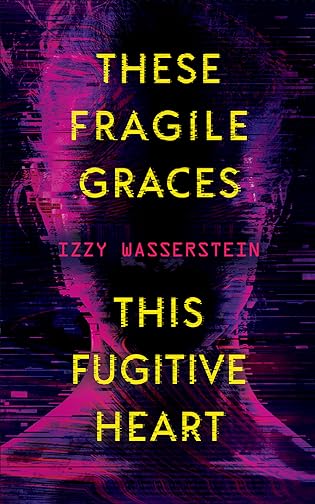 These Fragile Graces, This Fugitive Heart by
These Fragile Graces, This Fugitive Heart by 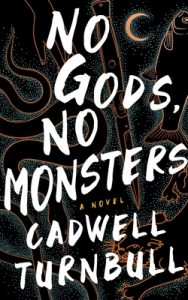 I also would have loved a bit more about the anarchist and commune movement as it applied to this particular story, because I was basing all of my knowledge and acceptance of the way that part of their world worked on Cadwell Turnbull’s fantastic
I also would have loved a bit more about the anarchist and commune movement as it applied to this particular story, because I was basing all of my knowledge and acceptance of the way that part of their world worked on Cadwell Turnbull’s fantastic 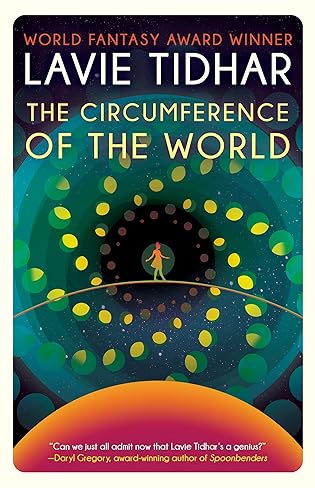 The Circumference of the World by
The Circumference of the World by 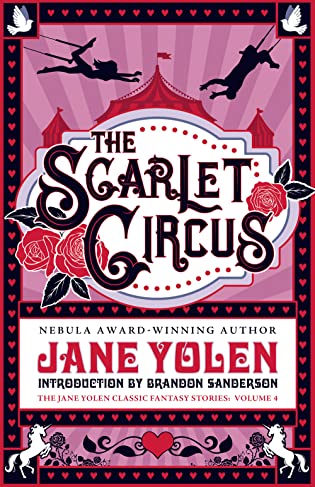 The Scarlet Circus by
The Scarlet Circus by 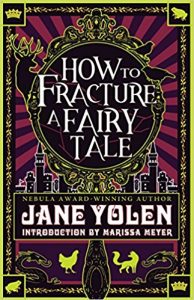 This ended up being my Valentine’s Day review because, to paraphrase the author’s forward just a bit, while the stories contained within are not “Romances” with a capital R, each story does contain a romantic element – even if that element is not the center of the story and seldom results in anything like a happy ever after.
This ended up being my Valentine’s Day review because, to paraphrase the author’s forward just a bit, while the stories contained within are not “Romances” with a capital R, each story does contain a romantic element – even if that element is not the center of the story and seldom results in anything like a happy ever after.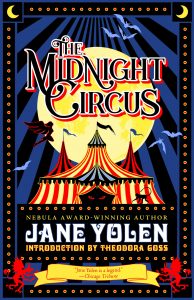 Those initial stories were interesting and fun but didn’t quite touch my heart – although “Dusty Loves” certainly tickled my funny bone a bit. These next ones, however, got a bit closer to the heart of the matter – or at least my heart.
Those initial stories were interesting and fun but didn’t quite touch my heart – although “Dusty Loves” certainly tickled my funny bone a bit. These next ones, however, got a bit closer to the heart of the matter – or at least my heart.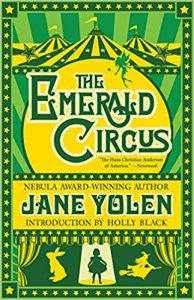 Escape Rating A-: Like most collections, the stories are a bit all over the map. I adored a couple, liked quite a few more, and a small number just missed the mark for me in one way or another – as the above descriptions show. But overall I’m very glad I picked this up, and enjoyed the ways that it played with romances of many types and stripes and definitions. That “love is all there is is all we know of love” doesn’t have to mean that all loves are exactly the same type.
Escape Rating A-: Like most collections, the stories are a bit all over the map. I adored a couple, liked quite a few more, and a small number just missed the mark for me in one way or another – as the above descriptions show. But overall I’m very glad I picked this up, and enjoyed the ways that it played with romances of many types and stripes and definitions. That “love is all there is is all we know of love” doesn’t have to mean that all loves are exactly the same type.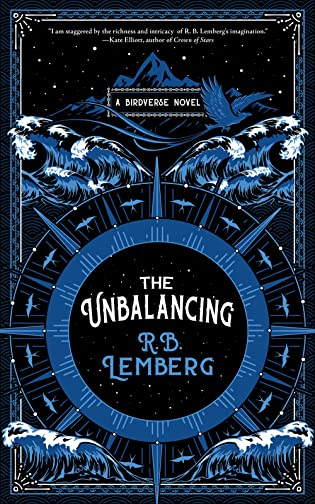 The Unbalancing by
The Unbalancing by 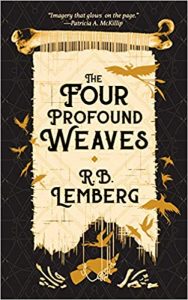 Escape Rating A: I enjoyed my introduction to the
Escape Rating A: I enjoyed my introduction to the 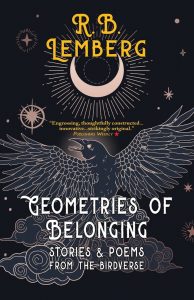 What gives this story its oomph – and lots of it – is the race to heal the star and save the islands. That the effort fails seems like it would be one hell of a downer – but it’s not. What makes the story rise in the end is the acknowledgement that the land, though beautiful, is not important. It’s the people that made the islands, and they’ll find a new place that they will make just as beautiful and fruitful, because they are bringing both the heart of Gelle-Gau and the heart of their beleaguered star along with them.
What gives this story its oomph – and lots of it – is the race to heal the star and save the islands. That the effort fails seems like it would be one hell of a downer – but it’s not. What makes the story rise in the end is the acknowledgement that the land, though beautiful, is not important. It’s the people that made the islands, and they’ll find a new place that they will make just as beautiful and fruitful, because they are bringing both the heart of Gelle-Gau and the heart of their beleaguered star along with them.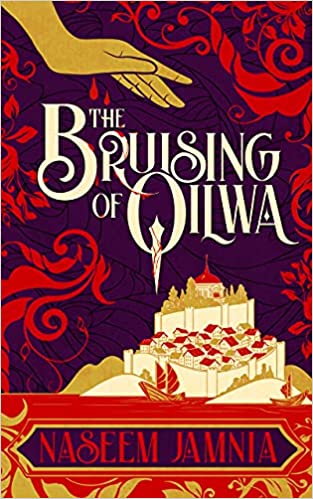 The Bruising of Qilwa by
The Bruising of Qilwa by 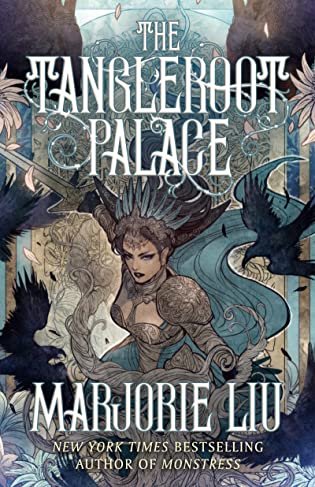 The Tangleroot Palace: Stories by
The Tangleroot Palace: Stories by 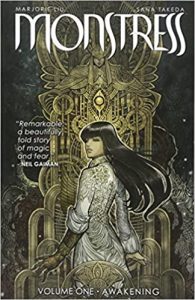 I picked this up not for her multiple award-winning
I picked this up not for her multiple award-winning 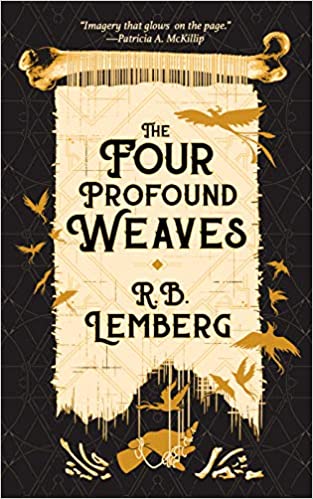 The Four Profound Weaves by
The Four Profound Weaves by 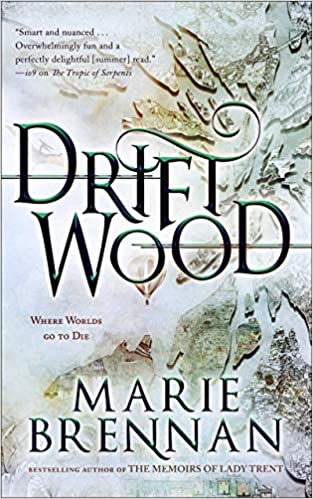 Driftwood by
Driftwood by